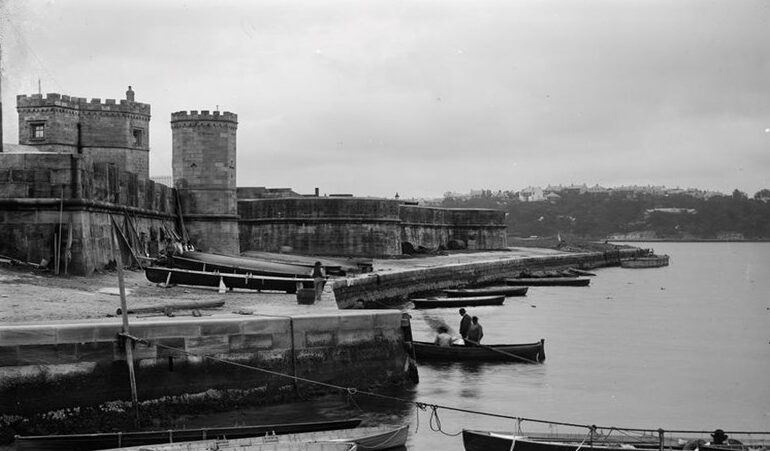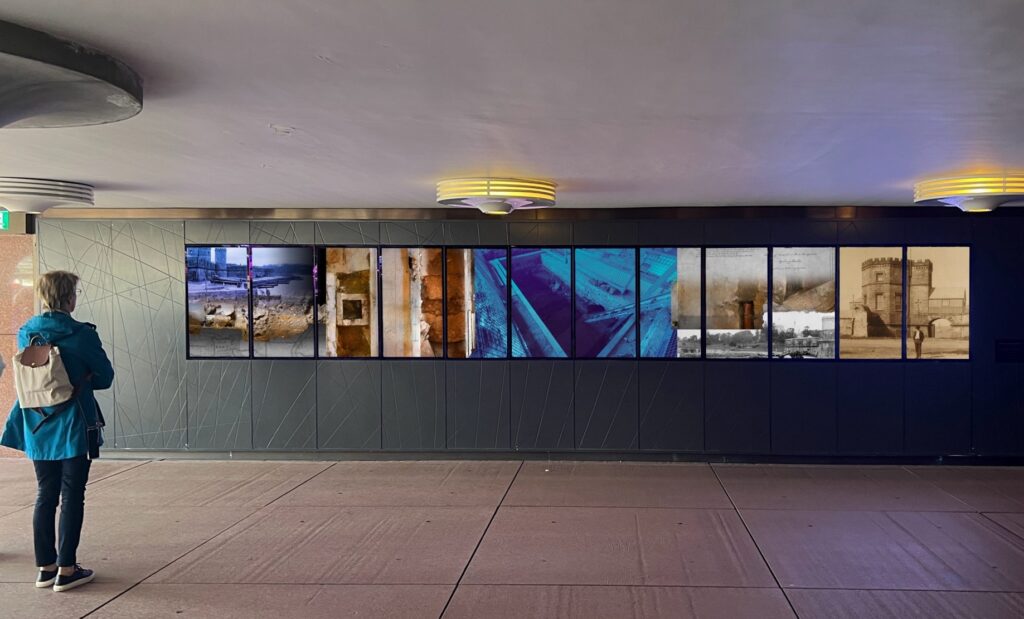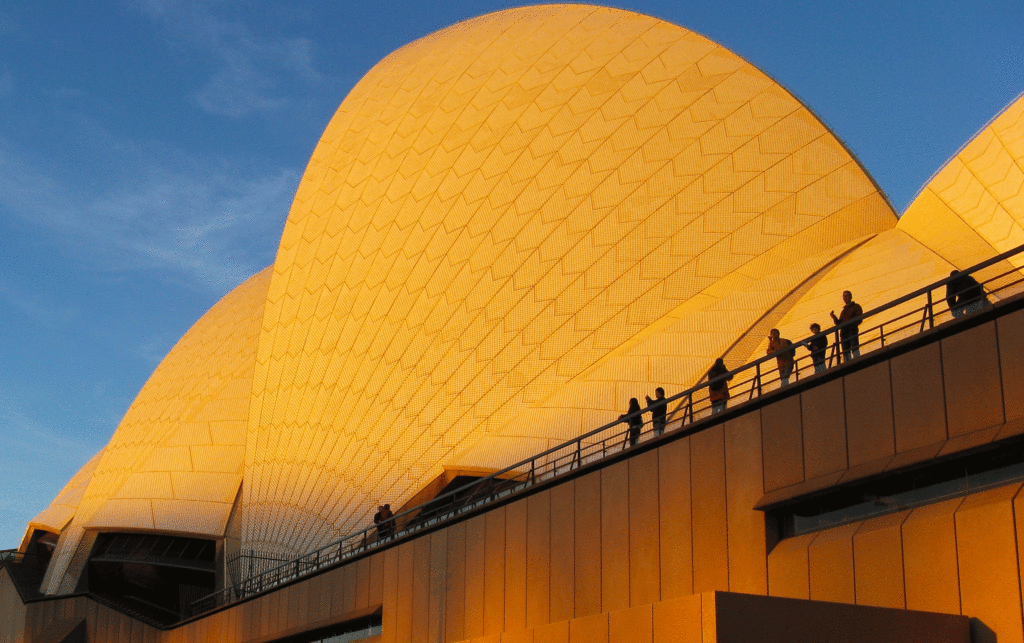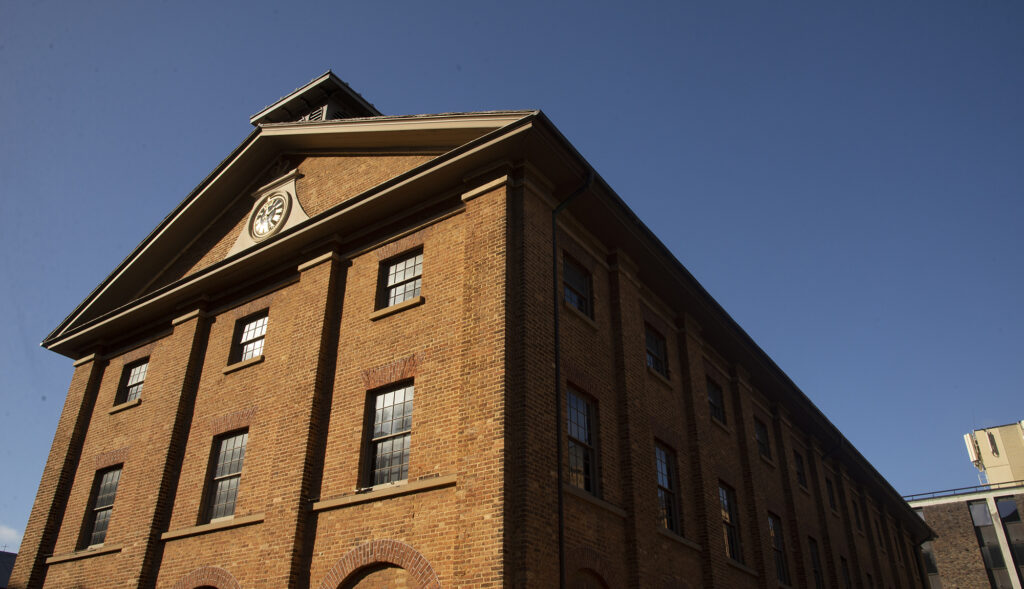
Sydney’s forgotten fort
Beneath Jørn Utzon’s Sydney Opera House lies a forgotten fort that once stood proud on the peninsula for over 80 years.
Located on Gadigal Country, Sydney Cove—the site of the Opera House—was known as Tubowgule before the British military took possession without treaty.
In the 1790s, one of the first houses in the colony was built for an Aboriginal man, known as Woollarawarre Bennelong. The point, or rocky outcrop, jutting out into the harbour adopted his name. A chequered history of uses followed on Bennelong Point—including as a redoubt, a tented observatory, a saltworks and a quarry before one structure came to dominate. Fort Macquarie was designed by Francis Greenway and built for Governor Macquarie in 1821.
Like the tower of Pinchgut, the walls of Fort Macquarie were built to deceive both friend and enemy.[1]
Ostensibly Macquarie said the Fort was to prevent ‘boats and vessels from being cut out of the Cove at Night’[2] but Greenway believed it was also to ‘secure the entrance of the harbour from surprise’ by foreign enemies.[3]
During the 1860s the fort was expanded to allay fears of a Russian invasion following the Crimean War. It was then demolished but referenced in the construction of the Gothic ‘Fort Macquarie Tram Depot’ that followed in 1902. The depot became redundant in the 1950s and was itself demolished in 1958 to allow for construction of the Sydney Opera House, which opened in 1973.
Recent archaeological investigations at the Sydney Opera House unearthed the remains of the fort. The Sydney Opera House Trust engaged GML to undertake test excavations between 2022 and 2023 to record significant archaeological features connected with several phases of colonial and post-colonial occupation of this site. Excavations uncovered the monolithic stonework of part of Fort Macquarie, the 1860s ‘Barbette’ extension and remains of the early twentieth-century tram depot.
To communicate Fort Macquarie’s significance to a wide audience, our Interpretation and Design team also recently produced a storyboard on the history of the fort for the Sydney Opera House’s Google Arts & Culture page.

Fort Macquarie Tram Depot, 1958. View northeast. Source: State Library of NSW.

Fort Macquarie, c1884–85. View to northwest. Source: Kerry and Co., Sydney; State Library of New South Wales.
[1] ‘Old Fort Macquarie’ and ‘Do We Build as Well’, Clarence and Richmond Examiner, 10 August 1901, p 4.
[2] Dispatch from Governor Macquarie to Earl Bathurst, dated 12 December 1817, Dispatch marked ‘No. 40 of 1817,’ and sent via the ship Harriet; in Historical records of Australia, Series 1, Volume 9, p 720.
[3] ‘To the Editor of the Sydney Gazette’, The Sydney Gazette and New South Wales Advertiser (Supplement to the Sydney Gazette), 13 September 1834, p 2.



